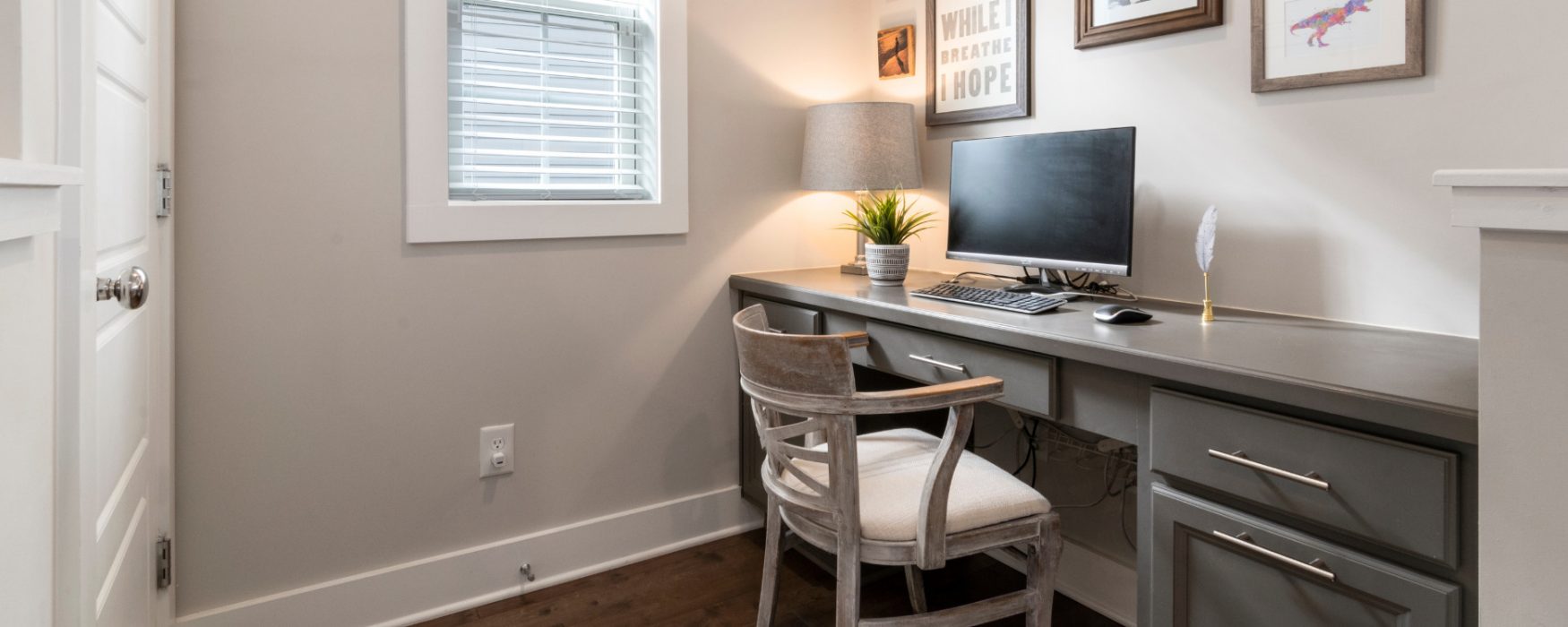
Creating an effective office design is crucial for productivity and comfort. Over the pandemic many remote employees threw together “temporary” workspaces in their home. But with so many people now working remotely on a more permanent basis, I like the following tips I found in the Wall Street Journal recently for optimizing your workspace:
Thoughtful Layout:
- Position your desk in a way that promotes an open and inviting atmosphere. Avoid facing a blank wall, as it can feel confining.
- Consider placing your desk perpendicular to a wall or window to create a sense of space. Alternatively, you can float your desk in the room.
- If possible, position your desk to face the door. This not only adds a touch of openness but also allows you to see who enters your workspace. This is a common feng shui concept.
- Ensure there is at least 3 feet of space from the edge of your desk to any obstruction behind you, whether it’s a wall, window, or furniture.
- Invest in a rug that accommodates your chair and desk legs, preferably one with a low pile for easy movement.
- If you have the space, create a comfortable seating area for brainstorming or relaxation. This can also double as a spot for your pets to rest during work calls. I have a dog bed in my office and one of my two dogs is always fast asleep on the bed. This has been a great talking point with people I am on a zoom call with, plus I like having them around!
Optimized Wall Space:
- Make the most of your office walls for storage by adding floating shelves, baskets, or bookcases. Bookcases are a must if you are a reader like me. I have many business books I reference while working, so I need to have a couple of bookcases in my home office.
- Invest in cabinets that fit under your desk for organizing office supplies and electronics.
- Manage wires and cords efficiently to reduce clutter. Consider using cable management solutions to prevent excessive cord slack.
- Avoid using unnecessarily long cords that can contribute to a cluttered workspace.
Optimal Lighting:
- Layer your lighting to avoid the harshness of overhead lights. Combine sources like pendant lights, task lamps, and floor lamps for balanced illumination.
- As the day progresses and natural light diminishes, supplement your lighting with adjustable fixtures. A well-placed floor lamp can help create a warm and inviting ambiance.
- Consider incorporating concealed lighting, such as lights within built-in units, to provide direct illumination for your workspace.
- When setting up task lighting, ensure the light source is a couple of inches above your computer to minimize glare.
Customized Desk Space:
- Tailor your desk dimensions to suit your specific work requirements.
- While standard table height falls between 28 and 30 inches, depth and width should be adjusted accordingly. Consider how many monitors you need, the space they take up, and how much space you need for paperwork.
- Avoid desks with under-table drawers that may restrict legroom and hinder comfort.
Ergonomic Setup:
- Follow ergonomic guidelines to ensure a comfortable working posture.
- Maintain a 90-degree angle at your elbows, hips, and knees when seated, with your feet flat on the floor and hands on the keyboard.
- Position your monitor so that the top of the screen is just below eye level to reduce strain on your neck.
- Desk height should generally range between 28 and 30 inches, and chair height should be between 18 and 20 inches.
I happen to like my home office better than my actual office! The one thing I would add to this list is scent. If you’re like me and enjoy having a wonderful scent in the room, I would recommend a diffuser. I like Pottery Barn’s diffusers. They last a while and come in many different varieties. I also have pictures of my family scattered throughout the room which brings me happiness throughout my day.
If you spend most of your work hours in your home office, it’s not just about a desk and a chair; it becomes a vital part of your daily life. It’s important to optimize and personalize that space so that you can function at your best.
By Mary E. Corrado, President & CEO of ASE, courtesy of SBAM-approved partner, ASE.
Click here for more News & Resources.